The original iPod was released in 2001, which is almost two decades ago. Since then, hundreds of millions of iPods have been sold.
Many MP3 players had been released way before the iPod showed up though, but its debut on the market made the MP3 player a must-have device.
If you’re one of the many privileged people to have owned an iPod since Apple unveiled it, you probably still have some of your favorite music collections stored there, whether or not you still use it.
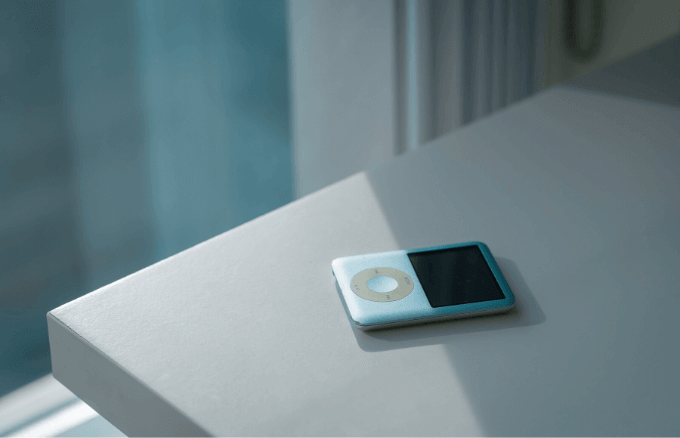
Your old music may not be readily available in any other form, but you can transfer the music from your iPod to your computer. We’re going to show you different ways of doing it.
You can transfer songs from your iPod to a Windows PC or Mac by connecting it to your computer and following a few steps as we’ll see below, or by using iPod transfer software.
How to Transfer Music From iPod To Windows PC
The first step is to prevent iTunes from automatically syncing with your iPod so that it doesn’t overwrite the music on the device with the iTunes library collection.
- To do this, disconnect any iOS device from your PC and launch iTunes. Go to Edit > Preferences.
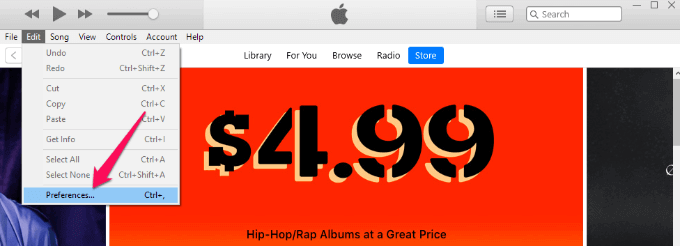
- Click the Devices tab and click the Prevent iPods, iPhones, and iPads from syncing automatically box to select it.
- Click OK and exit from iTunes.
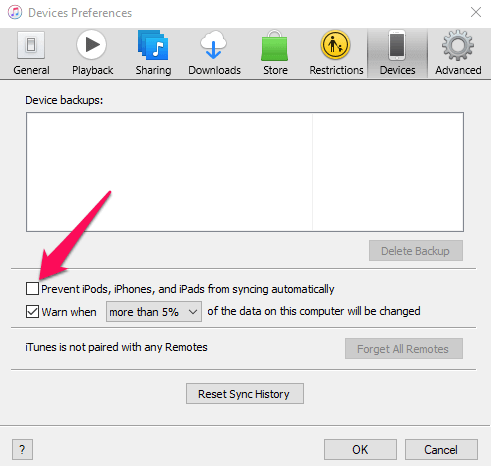
- Next, connect your iPod to your PC. It’ll appear as a drive in File Explorer. Open its drive and go to iPod_Control > Music folder.
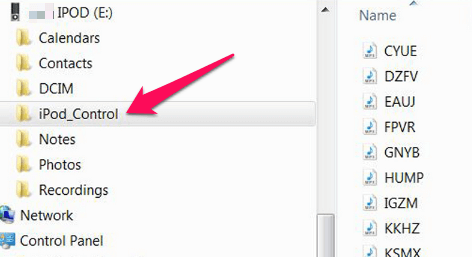
- If the drive comes up empty, you can reveal the hidden folders and files on your computer.
- Still, on the iPod_Control > Music folder, select all the folders in it, and then copy and paste them to your hard drive. This way, the music will be moved from your iPod to your computer.
Note: The music files from your iPod have four-letter names, and you can see each of their tags in File Explorer. Once you import the music to a media player of your choice, it’ll reinstate the song titles as they should appear.
- Once the files have been copied to your computer’s hard drive, go to File Explorer and right-click on the iPod drive.
- Select Eject to remove your iPod and disconnect it from the computer.
- You can add songs to your iTunes library on your PC by going to File > Add Folder to Library in iTunes for Windows.
- If you want your music to be copied directly to the iTunes media folder, you can enable this setting by opening iTunes and then clicking Edit>Preferences.
- Under the Advanced tab, find and check the Copy files to iTunes Media folder when adding to library box.
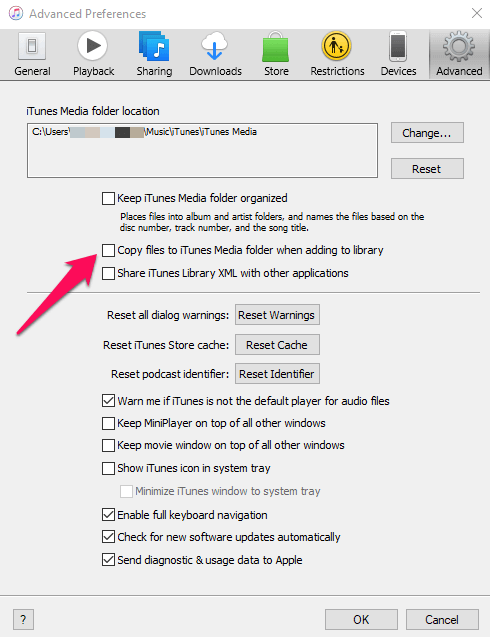
This allows you to move the original files anywhere else without worrying about losing them. Any files you added to the library before enabling the checkbox will still link to the original files.
How to Transfer Music From iPod To Mac
Before you transfer music from your iPod to a Mac, you need to disable syncing so that the media player won’t try to sync with your iPod and overwrite all the data on it. This happens because your music library on the Mac computer may not have some or all the songs and other files that the iPod contains, and you’ll eventually have an iPod with the same missing music or files.
To disable syncing, make sure there’s no iOS device connected to your Mac and open iTunes from the Applications menu.
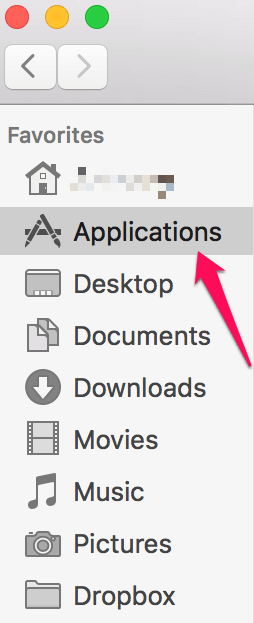
- In iTunes, select Preferences > Devices and then check the Prevent iPods and iPhones from syncing automatically box and then click OK.
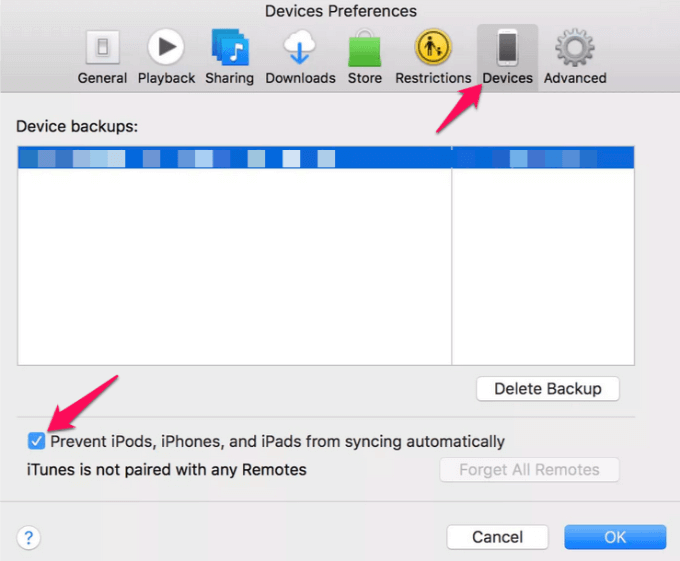
- Exit iTunes and then hold down the Option + Command keys. Plug your iPod into the Mac and release the keys when your iTunes launches with a dialog box informing you it’s in safe mode.

- Close it to quit iTunes. Your iPod is now mounted on your Mac desktop without syncing it with iTunes.
- Next, unmount your iPod to make the files visible. If you try to open the iPod icon on the desktop as-is, you won’t see the music files. Instead, you’ll see Calendars, Contacts, and Notes folders.
- The folders with your iPod music files are hidden, but you can make them visible using the OS X Terminal command-line interface.
- To do this, go to Applications/Utilities and open Terminal.
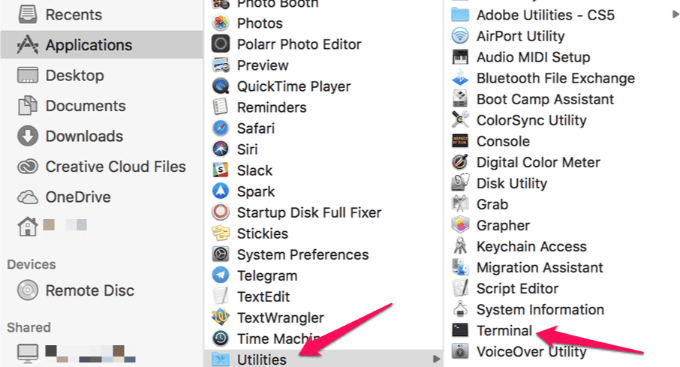
- Type the command below and press the return key after entering each line.:
defaults write com.apple.finder AppleShowAllFiles TRUE
killall Finder
The first line is a command to display all the files, while the second one refreshes Finder for the changes to be effected. Your desktop may disappear and reappear during the execution of these two commands, so don’t worry when that happens; it’s normal.
By entering these two lines, the Finder on your Mac will display all the hidden files on the computer.
You can now locate your music files from your iPod through Finder by clicking the iPod’s name or by double-clicking the iPod icon mounted on your desktop.
- Open the iPod Control folder and then open the music folder that contains your music and other media files on the iPod. Like Windows, the names of the files may not be recognizable, but their internal ID3 tags are intact, so any program including iTunes that can read such tags can reinstate the song titles for you.
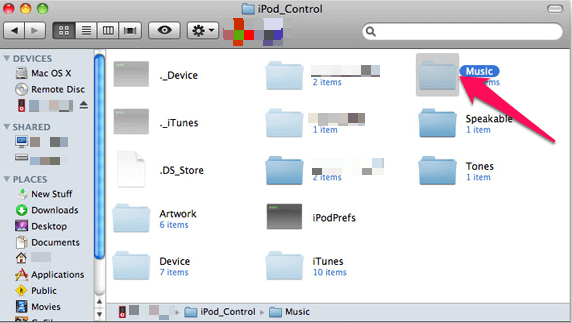
- Copy the music to your Mac using Finder, and drag and drop them to your preferred location or a new folder on the desktop.
- Next, unmount your iPod from the desktop and then add the music files to your iTunes library. To do this, click on the iTunes window once, and click Cancel on the iTunes dialog box.
- Click the Eject button in the iTunes sidebar next to your iPod’s name to unmount your iPod. Disconnect the iPod from your Mac.
- To transfer your music to the iTunes library on your Mac computer, select Preferences from the iTunes menu and then click the Advanced tab.
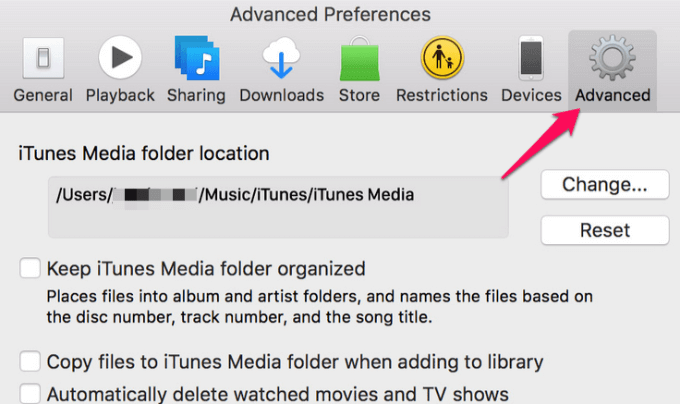
- Check the boxes Keep iTunes Music folder organized and Copy files to iTunes Music folder when adding to library and click OK.
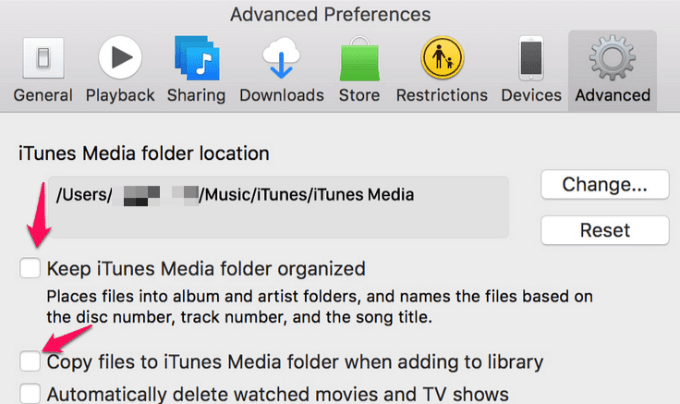
- In the iTunes File menu, click Add to Library, and go to the folder with the iPod music files you copied from the device.
- Click Open. The files will now be copied to the iTunes library, plus read the ID3 tags that will reinstate the song titles and other details like the album, artist, genre, and more.
- Once you’re done, make all the hidden files and folders invisible by using the Terminal command below and pressing the return key after entering each line
defaults write com.apple.finder AppleShowAllFiles FALSE
killall Finder
Note: Apple’s FairPlay DRM system is still intact so authorize any music you bought from the iTunes store before playing it.
Transfer iPod Music to Your Computer Using iPod Transfer Software
There are several software programs you can use to transfer your iPod music to a computer, but figuring out which one to use can be a daunting task. You need to find one that combines the features you need, and good transfer speed at a reasonable price.
Some of the best iPod transfer software programs you can try for this purpose include CopyTrans and TouchCopy.
- CopyTrans offers an all-around experience when transferring your songs and other content on your iPod to your computer. It’s relatively fast when moving files, and it copies metadata.
- TouchCopy is a feature-packed that can help you transfer your music and other media files and data, although its transfer speeds aren’t that good.